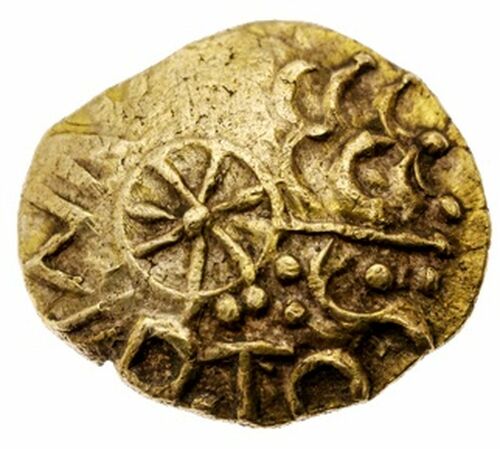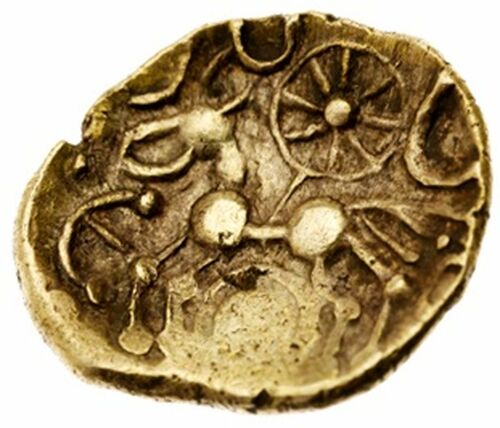A previously unknown British King is revealed by a gold coin, marking it as one of the remarkable discoveries of recent decades
New light has been shed on a little-known part of British history thanks to the extraordinary discovery of a coin bearing the name of a forgotten Iron Age ruler in Hampshire, south-east England.
The coin, which has the inscription “Esunertos,” was discovered by a metal detectorist in a field in Hampshire. Esunertos may have ruled as a king from the powerful Danebury Fort, according to experts’ speculation, and this find has been hailed as “one of the outstanding discoveries of recent decades.”

Leading Iron Age experts have studied the coin and deduced it to be struck by a pre-eminent male figure dubbed ‘IISVNIRTOS’ whose name translates as ‘Mighty as the God Esos’.
The coin was struck sometime between 50 and 30 BC, shortly after Julius Caesar’s first Roman raid of Britain in 55 BC.
The coin, which is thought to have been produced between 50 and 30 BC, was struck in conjunction with Julius Caesar’s first Roman raid on Britain in 55 BC when the Roman general and his 20,000 soldiers landed on the Kent coast. Despite a confrontation with Celtic warriors on the beach, the Romans encountered difficulties landing due to rough seas and eventually had to return home.

Photo: SPINK
Gregory Edmund, Iron Age Coin Specialist at Spink Auctioneers said: “This fabulous piece of prehistoric artwork completes the mental image we have when we think of Iron Age Britain – the war horse and chariot.
“But it also surprises us with the appearance of classical languages like Latin.
Dr John Sills of the Celtic Coin Index at the Ashmolean Museum said: ‘It is one of the outstanding discoveries of recent decades in Celtic numismatics.’
Initially, it was anticipated that the gold coin would sell for around £4,000 ($5000) at auction. But contrary to all expectations, it broke a record at Spinks Auction by selling for an astounding £20,400 ($25,500), according to the Daily Mail.
The coin was found by Lewis Fudge, a metal detectorist who received permission to search a farmer’s field in March this year. Lewis Fudge expressed his elation, stating:

Photo: SPINK
“I am over the moon. If it were not for people in the auction room, I would have jumped around. The collectors I spoke to are gobsmacked. I’m so glad I did not take them up on their private offers before the auction. To think my find has generated its own Wikipedia page is incredible.”
Spink Auctions describe the coin as a quarter slater with the obverse side of the coin bearing the name Esunertos in Latin, and with the worn head of Apollo formed of three interlocking rows of outward facing crescents, a seven-spoked wheel at center in lieu of the ear, and an eye of visage with radiating spike towards the neckline.
The reverse of the coin has a tripled-tailed horse, with a pincer-like mandible for face and linear ear, with pelleted mane, yoke or bucranium above the head, an 8-spoked wheel above spearing into the horse’s back, and double or triple ringed annulet below.
Cover photo: SPİNK
Related Post
A shocking documentary proves that mermaids do exist
SHOCKING Revelation: Thuya, Mother of Queen Tiye, Was the Grandmother of Akhenaten and Tutankhamun—What Ancient Egyptian Secrets Did She Leave Behind?
Breaking News: Astonishing Discoveries at Karahan Tepe Confirm an Extraterrestrial Civilization is Hiding on Earth, and NO ONE Knows!
Breaking News: Researchers FINALLY Discover U.S. Navy Flight 19 After 75 Years Lost in the Bermuda Triangle!
NASA’s Secret Investigation: Uncovering the Astonishing Mystery of the UFO Crash on the Mountain!
Explosive UFO Docs LEAKED: Startling Proof That Aliens Ruled Ancient Egypt!